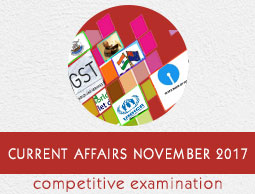
- Current Affairs November 2017
- Current Affairs - Home
- November 2017 - Summary
- Appointments
- Awards
- Books & Authors
- Committees
- Deaths
- Defence
- Economic
- Environment
- Finance
- Important Days
- International
- Miscellaneous
- National
- Persons in NEWS
- Places in NEWS
- Regional
- Reports
- Resignations & Retirements
- Science & Technology
- Sports
- November 2017 - Exams Resources
- Current Affairs - Quiz
- Current Affairs - Test
- Current Affairs - PDF
Current Affairs November 2017 - Technology
1 - China launched two BeiDou-3 navigation satellites on single carrier rocket
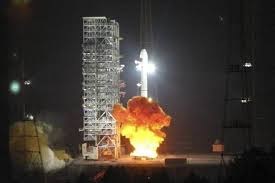
China, which is building its own navigation system to rival United States' GPS, launched two BeiDou-3 satellites into space though a single carrier rocket. The satellites were launched aboard a Long March-3B carrier rocket from Xichang Satellite Launch Center in the southwestern province of Sichuan.
The two newly launched satellites represent the third phase of the BeiDou Navigation Satellite System. This system will provide services for countries involved in the Belt and Road Initiative, and form a complete global satellite navigation system by 2020 -- by which time China plans to have more than 30 satellites.
2 - Scientists discover universe’s most ancient spiral galaxy

11 billion years old spiral galaxy was discovered by scientists of Australian National University (ANU) and Swinburne University of Technology. It is believed to provide details regarding early cosmos.
According to scientists, a powerful technique was used to verify vintage and spiral nature of the galaxy.
Oldest spiral galaxy will help in studying galaxies transition, emergence of Hubble sequence etc. This newly discovered galaxy has ability to form stars 20 times faster than the present galaxies.
3 - CZT Imager of AstroSat measured first phase resolved X-ray polarisation
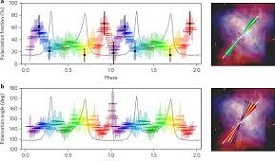
AstroSat, India’s multi-wavelength space telescope, has successfully accomplished the extremely difficult task of measuring X-ray polarization. In a paper published in ‘Nature Astronomy’, the team has documented the results of their eighteen-month study of the Crab pulsar in the Taurus Constellation and measured the variations of polarization as this highly magnetized object spins around 30 times every second.
This landmark measurement puts up a strong challenge to prevailing theories of high-energy X-ray emission from pulsars.
4 - Morocco launched earth observation satellite Mohammed VI-A

Mohammed VI-A, an earth observation satellite was launched by Morocco from French Guyana Space Centre. 1,110 kg weight Mohammed VI-A satellite will be used for mapping and land examine activities, regional renovation, agricultural surveillance, the natural calamities management, monitoring environment turbulences, and border and coastal tracking.
Mohammed VI-A is called as 150th satellite built by Thales Alenia Space to be launched by Arianespace. The satellite will additionally help in land management, slum eradication transparency maintenance etc.
5 - NASA reported the smallest ozone hole over Antarctica
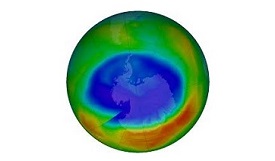
NASA reported that the ozone hole became two and a half times the size of the United States - 7.6 million square miles in previous years and then declined. NOAA and NASA collaborated to monitor the growth and recovery of the ozone hole every year.
The smaller ozone hole in 2017 was strongly influenced by an unstable and warmer Antarctic vortex - the stratospheric low-pressure system that rotates clockwise in the atmosphere above Antarctica. The smaller ozone-hole extent in 2016 and 2017 is due to natural variability and not a signal of rapid healing.
6 - Space kingdom Asgardia launched its first satellite ‘Asgardia-1’ into space
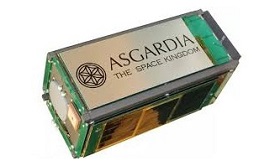
Virtual nation ‘Space Kingdom of Asgardia’ launched ‘Asgardia-1’ satellite. It was part of a project Russian scientist Igor Ashurbeyli and its team. Asgardia-1 satellite was launched from NASA’s Wallops Flight Facility in Virginia aboard a Cygnus spacecraft on an Orbital ATK Antares rocket. Asgardia-1 satellite is of size of a loaf of bread.
Asgardia is a virtual nation, which has its own flag and a coat of arms. Asgardia nation is a project under which, this new nation allows access to outer space free of the control of existing nations.
7 - International Seminar on Indian space program inaugurated
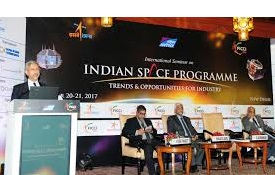
The International Seminar on Indian Space Program: ‘Trends and Opportunities for Industry’ was organized by Indian Space Research Organisation. The objective of this two-day conference was to deliberate on the best practices and to support further work of India's Space Sector.
The two-day seminar included sessions on Space Industry Ecosystem: Role and Opportunities for Industry, Leveraging Public Private Partnership for Indian Space Programs, Capacity building and talent management and panel discussion on role of industry in Indian Space Program. The conference helped in gaining the latest insight on the key thrust areas of Indian Space sector.
8 - NASA launched advanced satellite to improve weather forecast
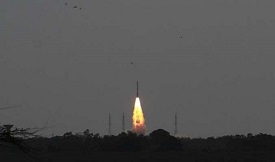
NASA has successfully launched for the National Oceanic and Atmospheric Administration (NOAA) the first in a series of four highly advanced polar-orbiting satellites, equipped with next-generation technology and designed to improve the accuracy of U.S. weather forecasts out to seven days.
The Joint Polar Satellite System-1 has five instruments, each of which is significantly upgraded from the instruments on NOAA’s previous polar-orbiting satellites. The more detailed observations from JPSS will allow forecasters to make predictions that are more accurate. JPSS-1 data will also improve recognition of climate patterns that influence the weather.
9 - NASA tests Supersonic Parachute for Mars 2020 mission
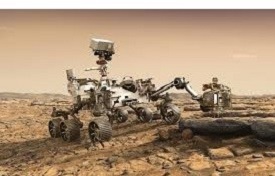
NASA has successfully tested a supersonic landing parachute that will be deployed in its Mars rover mission set to launch in 2020.
The mission will rely on a special parachute to slow the spacecraft down as it enters the Martian atmosphere at over 5.4 kilometer per second.
The Mars 2020 mission will seek signs of ancient Martian life by investigating evidence in place and by caching drilled samples of Martian rocks for potential future return to Earth.
10 - World’s First AI Politician Developed

Scientists have developed the world’s first artificial intelligence politician called SAM. It was created by Nick Gerritsen of New Zealand. It can answer a person’s queries regarding local issues such as policies around housing, education and immigration.
Gerritsen believes SAM will be advanced enough to run as a candidate for New Zealand's next general election by late 2020. It is constantly learning to respond to people through Facebook Messenger as well as a survey on its homepage.
11 - China launched remote sensing satellites
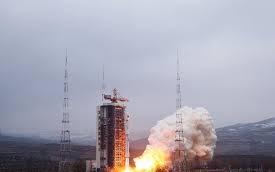
China has successfully launched remote sensing satellites designed to conduct electromagnetic probes and other experiments on a Long March-2C rocket from Xichang Satellite Launch Center in southwestern Sichuan province.
The satellites will conduct electromagnetic probes and other experiments. The launch is the 256th mission of the Long March rocket family. China also had earlier launched three remote sensing satellites designed to improve observation capability to promote commercial use for the remote sensing industry.